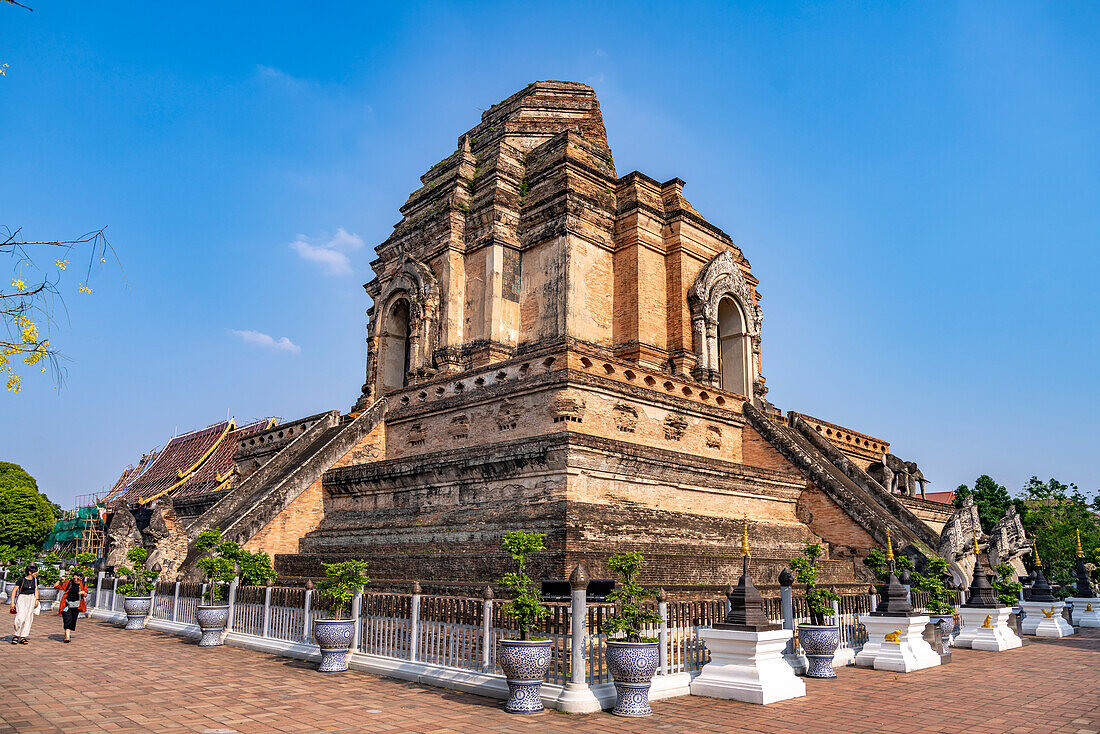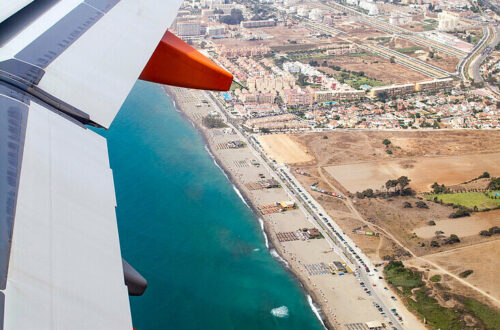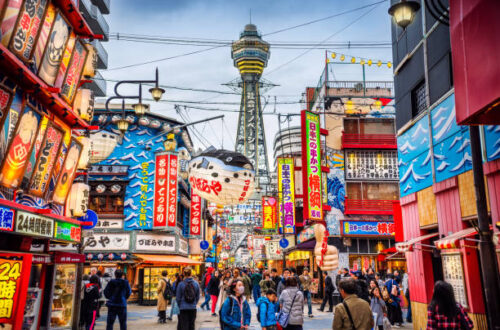Wat Chedi Luang is a 14th-century Buddhist temple in Chiang Mai, Thailand. It was once home to the Emerald Buddha and is a popular tourist attraction. The temple’s most prominent feature is the chedi, which has undergone several renovations over the years. It is a must-see destination for those interested in Thai history and culture.
History of Wat Chedi Luang
Wat Chedi Luang is a Buddhist temple located in the heart of Chiang Mai, Thailand. The temple’s name translates to “Temple of the Big Stupa”, referring to the massive chedi (stupa) that dominates the temple grounds. The construction of the chedi began in the 14th century, during the reign of King Saenmuangma, and was completed in the mid-15th century, under the reign of King Tilokkarat.
The chedi was originally 80 meters tall and was the largest structure in ancient Chiang Mai. It was built to enshrine the Emerald Buddha, which was later moved to Wat Phra Kaew in Bangkok. The chedi was also used as a venue for important religious ceremonies and state events.
The Lanna Kingdom Era
During the Lanna Kingdom era, Wat Chedi Luang was one of the most important temples in Chiang Mai. It served as the royal temple and was the centre of religious and cultural activities. The temple was also an important centre of learning, with many famous scholars and monks studying and teaching there.
Damage and Restoration
In 1545, the chedi was partially destroyed by an earthquake, which caused the top of the structure to collapse. The chedi remained in ruins for centuries until King Saenmuangma II ordered its restoration in the early 20th century. The restoration work was completed in the 1990s, and the chedi was restored to its former glory.
Today, Wat Chedi Luang is a popular tourist attraction and a centre of Buddhist worship in Chiang Mai. The temple’s rich history, stunning architecture, and cultural significance make it a must-visit destination for anyone interested in Thai history and culture.
Architecture
Main Chedi Structure
Wat Chedi Luang is home to a magnificent chedi that stands at 80 meters tall. The chedi was originally constructed in the 14th century and was later expanded during the reign of King Saenmuangma in the 15th century.
The chedi was built in a traditional Lanna style, which is characterised by its square-shaped base and tapering octagonal shape. The chedi is made of brick and stucco and is adorned with intricate carvings and sculptures.
Temple Grounds and Viharns
In addition to the main chedi, Wat Chedi Luang features several other structures that are worth exploring. The temple grounds are expansive and include several viharns, or assembly halls, that are used for various religious ceremonies and events. The viharns are built in a similar style to the chedi, with ornate carvings and sculptures adorning the walls and roofs.
Decorative Elements
The decorative elements found throughout Wat Chedi Luang are a testament to the skill and craftsmanship of the Lanna people. The temple is adorned with intricate carvings, sculptures, and murals that depict scenes from Buddhist mythology and local folklore. Some of the most notable decorative elements include the stone elephants that guard the entrance to the temple and the intricate carvings on the chedi itself.

Religious Importance
Buddhist Symbolism
Wat Chedi Luang is a significant temple in Thailand, particularly for its Buddhist symbolism. The temple’s chedi (stupa) is a representation of Mount Meru, a sacred mountain in Buddhist cosmology. The chedi’s square base represents the four continents, while its tapering structure symbolizes the diminishing levels of existence in Buddhist belief. The chedi is also adorned with intricate carvings of elephants, serpents, and other mythological creatures, which add to its religious significance.
Former Home of the Emerald Buddha
Another reason why Wat Chedi Luang is a revered temple in Thailand is that it was once the home of the Emerald Buddha, one of the most venerated Buddhist relics in the country. The Emerald Buddha is a green jade statue of the meditating Buddha, which is believed to have originated in India and was brought to Thailand in the 15th century. The statue was enshrined in Wat Chedi Luang until 1552, when it was moved to its current location in the Grand Palace in Bangkok.
Religious Festivals and Events
Wat Chedi Luang is also known for hosting several religious festivals and events throughout the year. One of the most significant events is the Visakha Puja, which commemorates the birth, enlightenment, and death of the Buddha.
During this festival, devotees gather at the temple to offer flowers, incense, and candles to the Buddha. Another important event is the Kathina Ceremony, which takes place after the end of the rainy season retreat for Buddhist monks. During this ceremony, laypeople offer new robes and other necessities to the monks as a gesture of respect and gratitude.
Cultural Impact
Influence on Thai Culture
Wat Chedi Luang has been an important cultural site in Thailand for centuries. The temple was built in the 14th century and has since been a centre of Buddhist worship in the region. The temple’s architecture and design have influenced Thai culture, as well as the art and architecture of neighbouring countries.
The temple’s chedi, or stupa, was once the tallest structure in Chiang Mai and was considered a symbol of the city’s power and prosperity. The chedi has been damaged over the years, but efforts have been made to restore it to its former glory. The temple’s restoration has been a source of pride for the Thai people and has helped to preserve the country’s cultural heritage.
Tourism and Economy
Wat Chedi Luang is a popular tourist destination in Chiang Mai and attracts visitors from all over the world. The temple’s historical significance and impressive architecture make it a must-see attraction for many tourists. The temple also hosts cultural events and festivals throughout the year, which draw large crowds and contribute to the local economy.
Tourism has been an important source of income for Chiang Mai, and the city has worked to promote sustainable tourism practices to ensure that the industry benefits the local community. The restoration of Wat Chedi Luang has been a part of this effort, as it has helped to preserve the city’s cultural heritage and attract visitors to the region.
Visiting Wat Chedi Luang
Location and Accessibility
Wat Chedi Luang is located in the centre of Chiang Mai, Thailand. It is easily accessible by foot, bicycle, tuk-tuk, or taxi. The temple is situated in the Old City area, near the Three Kings Monument. Visitors can enter the temple from either the Phrapokklao Road or the Ratchadamnoen Road.
Visitor Guidelines
When visiting Wat Chedi Luang, visitors are required to dress modestly and remove their shoes before entering any of the temple buildings. Shorts, tank tops, and revealing clothing are not allowed. Visitors are also expected to behave respectfully and quietly while on the temple grounds.
Best Times to Visit
The best time to visit Wat Chedi Luang is in the morning or late afternoon when the weather is cooler and the crowds are thinner. The temple is open daily from 6:00 AM to 6:00 PM. It is recommended to avoid visiting during midday when the sun is at its strongest.
Other Chiang Mai Related Posts





